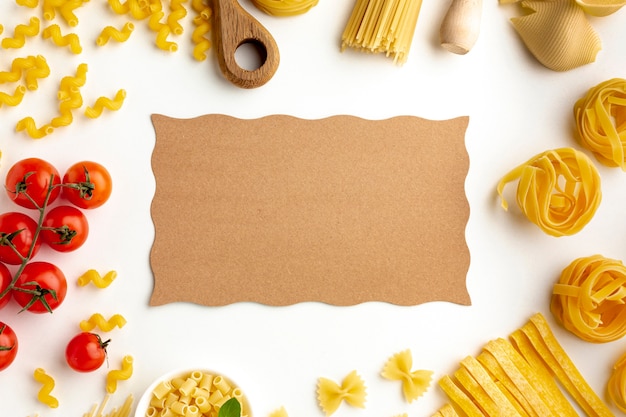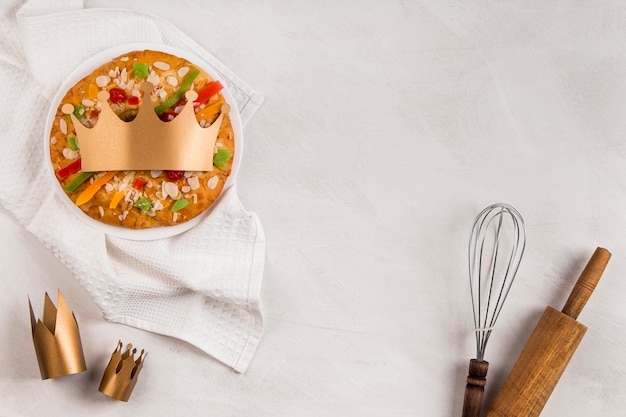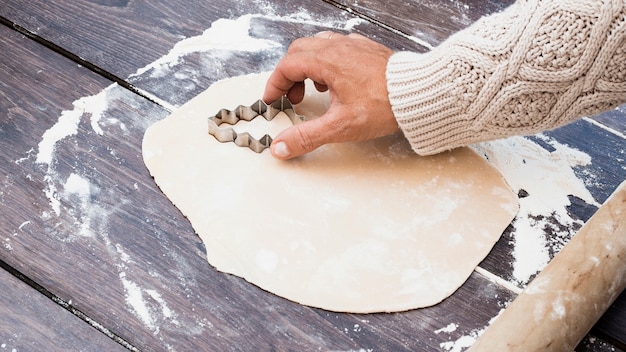As a seasoned cook and lover of all things culinary, I've encountered a fair share of kitchen conundrums. One that recently popped up, leaving me scratching my head, was whether it's safe to cook food directly on wax paper. I mean, it's paper, right? We use it for wrapping things, not for handling high temperatures. But then again, there's that magical parchment paper we all love, which withstands the oven's heat without a fuss. So, I embarked on a culinary quest to uncover the truth about wax paper's heat tolerance – and the surprising answer might just shock you.
(Part 1) The Wax Paper Dilemma
To be honest, I never considered using wax paper for anything beyond lining a drawer or wrapping a sandwich. The idea of putting it in the oven felt like a recipe for disaster – a melted, sticky mess clinging to my food and potentially ruining my baking sheet. However, curiosity got the better of me. The internet, that vast repository of knowledge, offered a mix of opinions on this topic. Some sources adamantly declared wax paper a culinary no-go, while others insisted it was perfectly safe.
The Science Behind Wax Paper

To understand why wax paper behaves the way it does, let's delve into its composition. Wax paper is essentially regular paper that's been coated with a thin layer of paraffin wax. Paraffin wax, derived from petroleum, has a relatively low melting point. This means that at high temperatures, the wax will melt. And that's where the confusion surrounding wax paper in the oven arises.
Now, anyone who's ever heated up a piece of wax paper knows it doesn't instantly go up in flames. Instead, the wax melts, leaving the paper floppy and flimsy. In some cases, the melted wax can even drip onto your food. While this might be acceptable if you're simply trying to prevent sticking, it's definitely not ideal for actual cooking.
The Case for Caution
The general consensus among culinary experts is that cooking directly on wax paper is a big no-no. The potential for melted wax contaminating your food is simply too high. Additionally, the paper itself could potentially catch fire if exposed to intense heat, leading to a potentially dangerous situation.
(Part 2) Exploring Alternatives
Now that I had a better understanding of why wax paper isn't the best choice for cooking, I decided to explore safer alternatives – the kind that wouldn't leave me worrying about food poisoning or a kitchen fire.
Parchment Paper: The Baking Hero

If there's a culinary hero in the baking world, it's parchment paper. I have to admit, I was a bit slow to jump on the parchment paper bandwagon. I always thought it was just a fancy way of saying "baking paper," which I was perfectly happy using. But oh, how I was wrong!
Parchment paper is actually made from treated wood pulp and boasts a special silicone coating that makes it non-stick and heat-resistant. It can withstand temperatures up to 420°F (220°C), making it the perfect choice for baking cookies, roasting vegetables, or even lining your baking sheets.
The Benefits of Parchment Paper
Parchment paper offers several distinct advantages over wax paper in the kitchen:
- Non-stick: It prevents baked goods from sticking to the pan, making cleanup a breeze. No more scrubbing away at stubborn cookie crumbs!
- Heat-resistant: It can handle high temperatures without melting or warping, making it ideal for cooking and baking. No more worries about a flimsy, melted mess in the oven.
- Durable: It's strong enough to withstand the weight of heavier foods, like roasts. No more tears or rips while you're trying to transfer your delicious creations.
- Reusable: You can often reuse parchment paper a few times before needing to replace it, reducing waste. It's a more eco-friendly choice than using disposable wax paper.
- Flavorless: It doesn't impart any flavor to your food. You can savor the pure taste of your culinary creations, without any unwanted hints of wax.
silicone baking mats: A Modern Classic

Another fantastic alternative to wax paper, especially for baking, is silicone baking mats. These mats are made from food-grade silicone, which is naturally heat-resistant and non-stick. They are also flexible, durable, and easy to clean.
The Advantages of Silicone Baking Mats
Here's why silicone baking mats are a kitchen game-changer:
- Durable: They can withstand high temperatures and are highly resistant to tearing or punctures. They're built to last, even with regular use.
- Versatile: They can be used for baking, roasting, and even freezing. They're your go-to solution for a variety of culinary tasks.
- Easy to Clean: They can be easily washed by hand or in the dishwasher. No more tedious scrubbing or soaking, making cleanup a breeze.
- Non-stick: They prevent food from sticking, making cleanup a breeze. No more struggling to remove baked-on goodies from your pans.
- Reusable: They can be used for hundreds of bakes, making them a sustainable choice. They're a long-lasting investment for your kitchen, reducing waste and saving you money in the long run.
(Part 3) Putting It to the Test
Armed with my newfound knowledge and a determination to prove the truth about wax paper, I decided to conduct a little experiment. I took two identical baking sheets and placed a piece of wax paper on one and a piece of parchment paper on the other. Then, I placed a small piece of chicken breast on each sheet and popped them into the oven at 350°F (175°C) for 15 minutes.
The Results
After 15 minutes, I removed the baking sheets from the oven. The chicken breast on the parchment paper was cooked perfectly, with a nice golden brown crust. However, the chicken breast on the wax paper was a disaster. The wax had melted, creating a sticky mess that clung to the chicken. The paper itself was warped and discolored. Needless to say, the chicken on the wax paper was inedible.
Table of Results
| Baking Sheet | Cooking Paper | Result |
|---|---|---|
| Sheet 1 | Wax Paper | Melted wax, sticky mess, inedible chicken |
| Sheet 2 | Parchment Paper | Perfectly cooked chicken, no issues |
(Part 4) The Bottom Line
My experiment confirmed what I had suspected all along: cooking directly on wax paper is a recipe for disaster. The wax melts, creating a sticky mess that contaminates your food and makes it unsafe to eat. It's also a fire hazard. On the other hand, parchment paper performed flawlessly, producing perfectly cooked chicken with zero issues.
Why Parchment Paper is the Winner
So, if you're looking for a reliable way to line your baking sheets or prevent food from sticking, parchment paper is the clear winner. It's safe, effective, and easy to use. It's also more versatile than wax paper, as it can be used for a wider range of cooking applications.
(Part 5) Beyond the Kitchen
While it's best to avoid using wax paper for cooking, it still has its place in the kitchen. It's perfect for lining drawers to prevent spills, wrapping sandwiches and snacks for lunch, or protecting delicate surfaces during crafting projects.
Wax Paper's Strengths
Here are some of the things wax paper excels at:
- Lining Drawers: It helps keep your drawers clean and free from spills and messes. It's a great way to protect your drawers from sticky substances.
- Wrapping Food: It's perfect for wrapping sandwiches, snacks, and leftovers to keep them fresh. It's a convenient and effective way to store food in the fridge or pantry.
- Crafting Projects: It can be used as a protective layer for delicate surfaces during crafting projects. It's a handy tool for protecting your work surfaces from paint, glue, or other messy materials.
- Freezing Food: It can be used to wrap food items for freezing. It helps prevent freezer burn and keeps your food fresh for longer.
(Part 6) The Importance of Safety
It's important to note that even though parchment paper is a safer alternative to wax paper for cooking, it's still crucial to use it carefully. Make sure to always keep an eye on your food while it's in the oven, and never leave parchment paper unattended on a hot burner.
kitchen safety tips
Here are some general kitchen safety tips to keep in mind:
- Never leave the kitchen unattended while cooking. Accidents can happen quickly, so it's always best to be present while cooking.
- Always use oven mitts or potholders when handling hot items. Protect yourself from burns by using appropriate tools when dealing with hot surfaces or dishes.
- Keep flammable materials away from heat sources. Be mindful of the potential fire hazards in your kitchen and avoid placing flammable items near open flames or hot appliances.
- Make sure your kitchen is well-ventilated. Good ventilation helps to prevent the buildup of smoke and fumes, making your kitchen a safer environment.
- Be aware of the potential for burns and other injuries. Always be mindful of your surroundings and take necessary precautions to prevent accidents and injuries.
(Part 7) A Culinary Lesson Learned
My culinary journey with wax paper has been an eye-opening one. It taught me the importance of questioning assumptions and doing my research before diving into any new cooking technique. It also reminded me that there are always safer, more effective options available.
The Power of Knowledge
In the world of cooking, knowledge is power. When you understand the properties of the ingredients and tools you're using, you can make informed decisions that ensure safe and delicious meals.
(Part 8) FAQs
I'm sure you have some questions about wax paper and parchment paper, so here are some answers to the most common inquiries:
FAQs
1. Can I use wax paper for baking cookies?
Absolutely not! The wax will melt and contaminate your cookies, making them unsafe to eat. Stick to parchment paper or silicone baking mats for those delicious treats.
2. Can I use wax paper to wrap food for freezing?
Yes, you can use wax paper to wrap food for freezing. It's a good way to prevent freezer burn. Just make sure to use a tight wrap and avoid using it for oily foods, as the wax can melt and leave a residue.
3. Can I use wax paper in the microwave?
No, absolutely not! Using wax paper in the microwave is a fire hazard. The wax can melt and potentially catch fire. Use microwave-safe containers or parchment paper instead.
4. Can I reuse parchment paper?
Yes, you can often reuse parchment paper a few times before needing to replace it. However, if the paper is heavily soiled or showing signs of wear and tear, it's best to discard it.
5. Is parchment paper better than silicone baking mats?
Both parchment paper and silicone baking mats are excellent choices for baking. The best option for you depends on your personal preferences and needs. Parchment paper is more versatile and can be used for a wider range of applications, while silicone baking mats are more durable and reusable.
I hope this article has shed some light on the world of wax paper and its surprisingly limited culinary applications. Remember, when it comes to cooking, it's always better to err on the side of caution. Choose safe, effective alternatives like parchment paper and silicone baking mats, and enjoy the peace of mind that comes with knowing your food is prepared safely and deliciously.
Everyone is watching

How to Cook Frozen Lobster Tails Perfectly: A Step-by-Step Guide
RecipesLobster. Just the word conjures up images of lavish meals, special occasions, and a taste of luxury. But let's...

Pork Fillet Cooking Time: How Long to Cook It Perfectly
RecipesPork fillet, or tenderloin as it's sometimes called, is a real favourite in our house. It's so versatile, and...

Pigs in a Blanket Cooking Time: How Long to Bake for Perfect Results
RecipesAh, pigs in a blanket. Just the name conjures up images of those delightful little parcels of crispy pastry en...

The Ultimate Guide to Cooking Delicious Frankfurters
RecipesLet's face it, we all love a good frankfurter. It's a classic, simple, and always satisfying. But let's be rea...

Wolf Meat Recipes: A Guide to Cooking Wild Game
RecipesLet's be honest, you don't see wolf meat at your local butcher shop every day. It's a bit of a wild card, but ...
